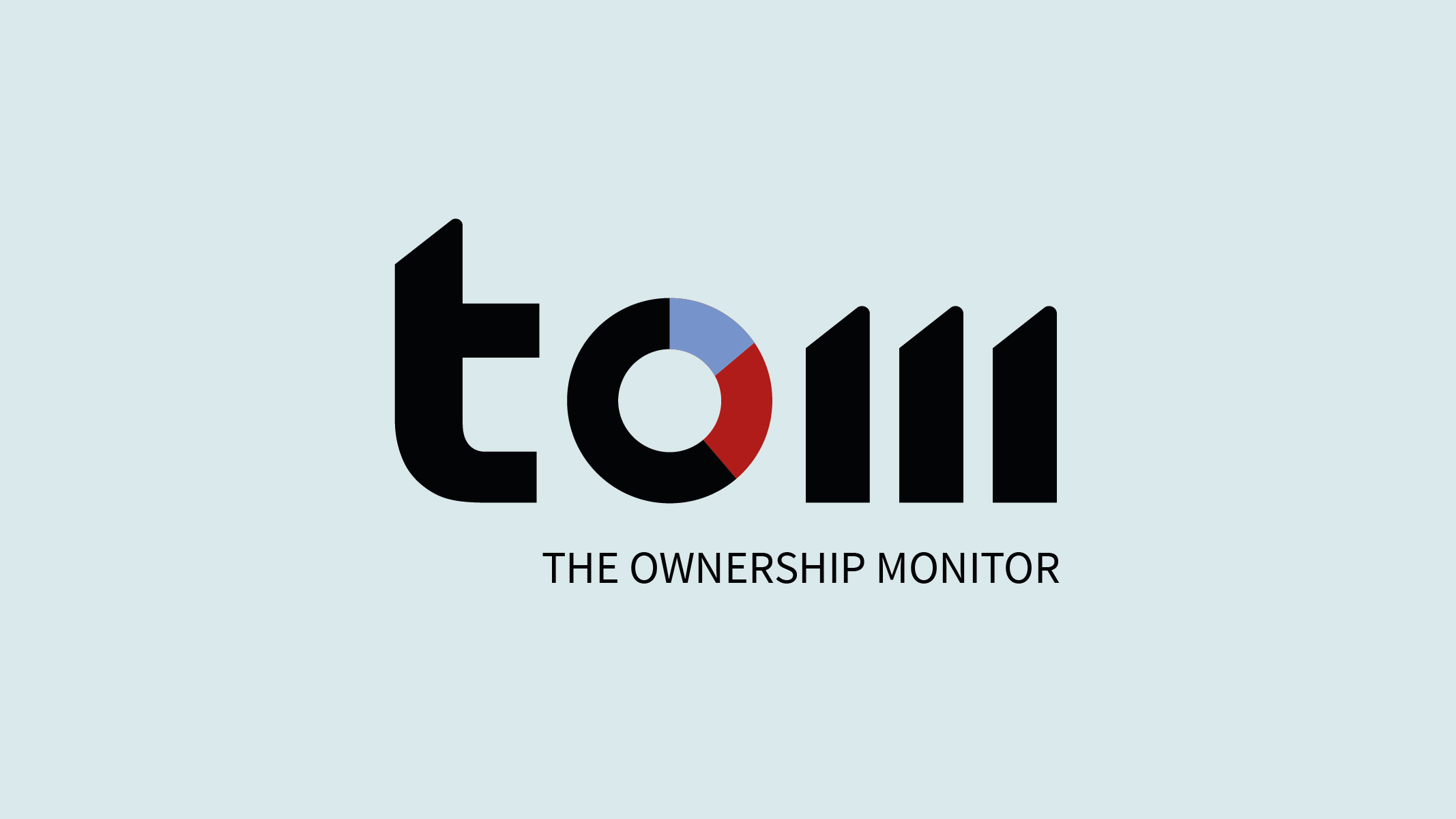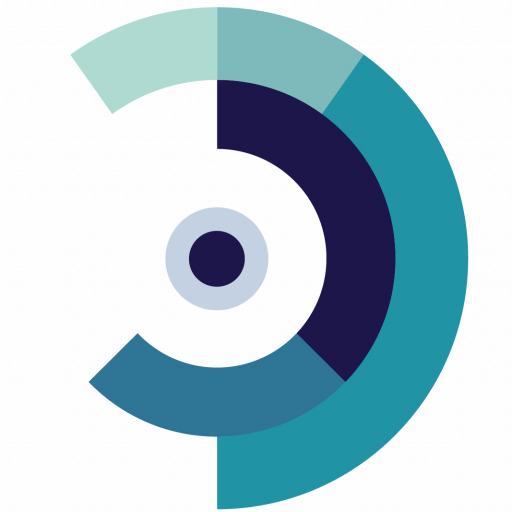
TOM – The Ownership Monitor
The excellence R&D hub for the analysis of business ownership structures launched by Transcrime and its spin-off Crime&tech
TOM – The Ownership Monitor is a joint-initiative launched by Transcrime, the Research Centre on Innovation and Crime of the Università Cattolica del Sacro Cuore, and its spin-off company Crime&tech.
Mission
TOM is an excellence R&D hub for the analysis of business ownership structures. Our mission is to advance the knowledge on who controls firms, how control of firms takes places and evolves, and how it relates to crime and criminals.
At TOM we:
- Monitor and study the ownership structure of firms in Europe and beyond
- Identify types and patterns of legal ownership and beneficial ownership
- Study ownership anomalies and red-flags which may signal schemes of money laundering, corruption, collusion and other financial crimes
- Produce metrics and indicators to summarise complex ownership patterns
- Develop models to early-detect anomalous ownership structures
- Develop tools for tracing owners and BOs and predict criminal behaviour of firms and of their owners
- Review and interconnect registries, data providers and sources of ownership information all over the world
- Train researchers, practitioners and the civil society on how to access, analyse and employ ownership data
- Understand the legal and technical constraints in using ownership information, including security and personal data protection issues
Vision
The role of firms to hide money laundering, organised and financial crime has been acknowledged widely. Recent years have seen a surge of initiatives, at global level, to boost the transparency of firms, as a way to prevent their misuse by criminals. The establishment of BO registers and the increase of company transparency are just few examples.
But most of these initiatives have focused on who controls firms. Accordingly, most police investigations and due diligence activities by banks and private entities focus on individuals, with all the biases and constraints (e.g. data protection) that this implies.
Instead, we have gained interest in how control of firms takes place. We have started studying ownership schemes employing machine learning and social network analysis skills. We have become experts of firm ownership structures, demonstrating that the how can suggest anomalous behaviour by firms and owners, produce investigative leads and orient risk assessment, boosting early-detection of risks – and understanding hidden patterns which would not be visible with a traditional approach.
We believe that this innovative approach towards the analysis of firms’ ownership will not only be helpful to prevent crime, but also to advance knowledge in a wide variety of domains – finance, taxation, competition policy, industrial organisation, sociology.
We are working on several research projects with public and private partners in this area. And we have developed operational tools to help users to gain intelligence and analytics out of the complexity of ownership information.
Partnerships
TOM partners with company registries, BO registries, business data providers, solution providers, academic researchers.
TOM works for and with:
- Law enforcement
- Anti-corruption agencies
- Financial intelligence units
- Public authorities and local governments
- Banks and other financial institutions
- Professionals and other AML obliged entities
- Corporate sector at large
Research projects and tools
Projects:
- KLEPTOTRACE: we are boosting the investigation, tracing and recovery of the assets related to transnational high-level corruption and to sanctioned regimes and entities through a combination of research, training and data-driven tools. We are working together with research centers, LEAs, anti-corruption agencies, FIUs, civil society, journalists and business registers.
- CSABOT: we are training European civil society organisations on how to collect and use information from BO and company registries to advance the transparency of European firms and combat financial crime. In this project we are working together with Transparency International, Tax Justice Network and the Government Transparency Institute.
- DATACROS and DATACROS II: we are analysing the anomalies in the ownership structure of European firms which may lead to collusion and corruption. We have developed a tool for screening large batches of firms, combining different information and producing risk scores. We are working together with police agencies, anti-corruption authorities, competition authorities all over Europe and beyond.
- PROMENADE: we are developing a tool to assess the risk of firms and individuals owning vessels and shipments. We are combining ownership information with satellite data, customs’ documents and previous enforcement records. We are working together with, among others, maritime agencies all over Europe, Leonardo, Marine Traffic, GMV.
- EBOCS I, II, III: we have worked with company registries from 7 EU member states to develop a unique point of access to company legal ownership and beneficial ownership information, which can be used by police, FIUs and asset recovery offices to boost financial investigations
- COESO: we have been supporting investigative journalists to access and employ more effectively ownership information for improving their investigation and media coverage. We are working on two areas: real estate and the shipping industry.
- BOWNET: we worked with company registries, EBR, AML supervisors, banks and professionals to understand what would be best to improve the access, collection and use of firm ownership information so as to combat money laundering and financial crimes.
- POLIS-Regione Lombardia: risk indicators of organized crime infiltration: we are analysing and monitoring, among other things, the anomalies in the ownership structure of registered firms in Lombardy, studying their shareholders and beneficial owners, their links with secrecy jurisdictions and their risk of infiltration by organised crime groups.
- Medi-Theft: within this project, which aims at developing an intelligence-based platform to contrast the organised theft of medicines across the EU, Transcrime researchers will a) identify the main modi operandi used by criminals to steal medicines and to re-enter them in the legal supply chain by exploiting connivent or bogus companies and b) develop a risk assessment module that supports the identification of suspicious companies through the analysis of their characteristics and ownership structure.
Tools:
- DATACROS: it identifies in real-time the risk of firms to be involved in financial crimes. It can support public authorities to monitor the risk across regions, municipalities and business sectors;
- INVESTIGATOR: it detects in real time anomalies and red-flags in the ownership structure of firms, presence of countermeasures, and other risk factors. It produces a rating which can be employed for customer due diligence and supply-chain integrity risk assessment.
Publications and Working papers
Bosisio, A., & Jofre, M. 2022, Investigating High-Risk Firms. European Law Enforcement Research Bulletin, 22, SCE Nr.6: tbd. Available here.
Transcrime, 2022, Inside the matrioska: the firms controlled by sanctioned ‘oligarchs’ across European regions and sectors. Milano: Università Cattolica del Sacro Cuore. Available here.
Jofre, M., 2022, “Circular ownership and financial crime: risk profiling of the Malta gambling division”. Third AML Empirical Research Conference 2022 proceedings. Available here.
Jofre, M., 2022, “Network analysis for financial crime risk assessment: the case study of the gambling division in Malta”. Global Crime. Available here.
Transcrime, 2021, Developing a Tool to Assess Corruption Risk factors in firms’ Ownership Structure – Final Report of Project DATACROS. Milano: Università Cattolica del Sacro Cuore. Available here.
Bosisio A., Nicolazzo G., Riccardi M., 2021, I cambi di proprietà delle aziende italiane durante l’emergenza Covid-19: trend e fattori di rischio, Transcrime Research in Brief, Milano: Università Cattolica del Sacro Cuore. Available here.
Aziani A., Ferwerda J., Riccardi M., 2021, “Who are our owners? Exploring the ownership links of businesses to identify illicit financial flows”, European Journal of Criminology, DOI: 10.1177/1477370820980368. Available here.
Jofre M., Bosisio A., Riccardi M. and Guastamacchia S., 2021 “Money laundering and the detection of bad companies: a machine learning approach for the risk assessment of opaque ownership structures”, AML Empirical Research Conference 2021 proceedings. Available here.
Riccardi M., 2021, “Beyond blacklists: alternative approaches to rating countries at high risk of money laundering”, AML Empirical Research Conference 2021 proceedings. Available here.
Jofre, M., 2021, “Network analysis for financial crime risk assessment: the case study of the gambling division in Malta”. Global Crime (Accepted – towards publication).
Riccardi M., Milani R., Camerini D., 2019, “Developing an indicator to assess the risk of money laundering across territories: an application to Italian provinces”, European Journal of Criminal Policy and Research, Springer, March 2019, Volume 25, Issue 1, pp 21-43.
Transcrime (Eds.), 2018, Mapping the risk of organised crime infiltration in European businesses – Final Report of Project MORE, Milan: Università Cattolica Sacro Cuore. Available here.
Riccardi M. and Milani R., 2018, “Opacity of business ownership and the risk of money laundering” in Van Duyne et al., The Janus Faces of Cross Border Crimes in Europe, Wolf Legal Publishers.
Transcrime (eds), 2017, Assessing the risk of money laundering in Europe. Final Report of Project IARM, Milano: Università Cattolica Sacro Cuore – Transcrime. Available here.
Transcrime, 2013, The identification of beneficial owners in the fight against money laundering, Final Report of Project BOWNET, Trento: Transcrime – Università degli Studi di Trento. Available here.
Riccardi M. and Agostino V., 2013, “Identifying beneficial owners for fighting against money laundering: the results of EU Project BOWNET”, European Police Science and Research Bulletin, Issue 8, Summer 2013. European Police College (CEPOL), Luxembourg: Publications Office of the European Union.
Riccardi M., 2013, “L’identificazione del titolare effettivo nella lotta al riciclaggio: problemi attuali e prospettive future”, Il Commercialista Veneto, Numero 213 – Maggio/Giugno 2013, p.5. Available here.
Savona E., Riccardi M., Vettori B., Ponticelli J., Maggioni M. (2007), Cost Benefit Analysis of Transparency Requirements in the Company/Corporate Field and Banking Sector relevant for the fight against Money Laundering and other Financial Crime. Available here.
